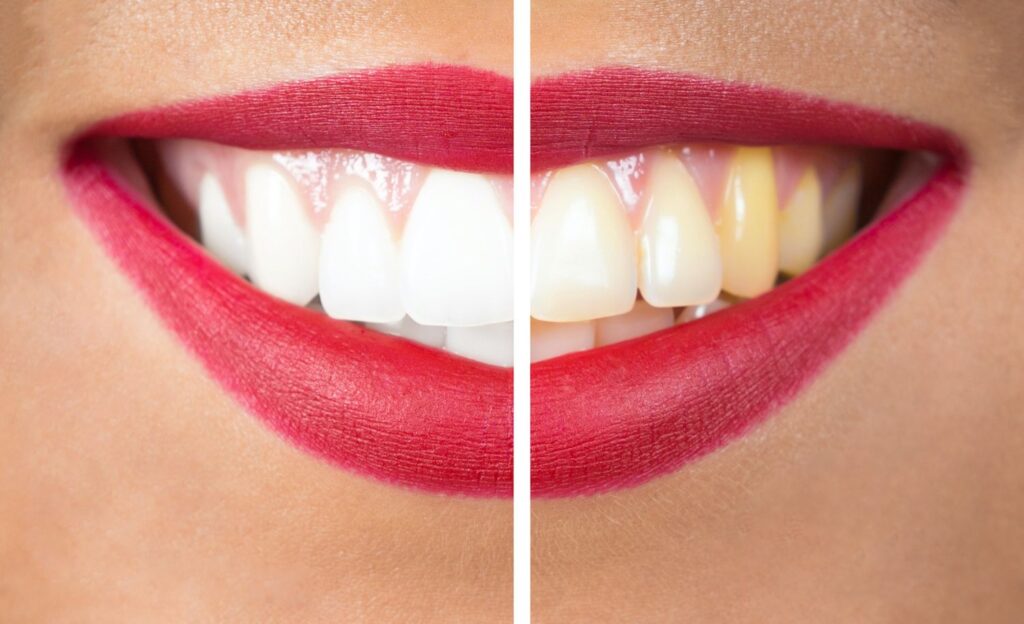Dental discoloration can be annoying. Stains on your smile can disrupt your dental aesthetic and deliver a blow to your overall confidence. While discolored teeth present a cosmetic dental problem, they may also indicate a larger oral health issue.
For this reason, you should visit your dentist if you notice dental discoloration. They can provide smile enhancement treatment to restore the appearance of your teeth while also considering your long-term oral health.
You can feel more confident when you talk to your dentist about dental discoloration if you know more about the different forms it can take. Read on to learn about four types of stains that can form on your teeth and what they can mean for your dental health.

Dark Dental Stains
Dark discoloration on your teeth can appear stark against the usual pearly white of your teeth. In many cases, these types of dental stains develop due to the substances you consume. Dark-colored foods and beverages will transfer staining agents to your teeth over time where they will leave black or brown stains behind.
Your dentist can use professional teeth whitening to lift surface stains and make your smile brighter. But sometimes, dark tooth stains can occur as a symptom of tooth decay. Your dentist will need to treat cavities before they worsen, so do not delay telling your dentist about this change in your smile.
Yellowing Teeth
If your teeth start to turn yellow in color, the substances you consume can cause this type of discoloration. However, you can see yellowing teeth if you suffer from dental erosion as well.
Your teeth feature a hard outer layer called enamel that is pearly white in color usually. Over time, a number of factors, including aging and other conditions beyond your control, may cause enamel to wear down. This can reveal underlying dentin in your teeth which appears yellow.
Practice good oral hygiene, including attending regular check-ups at your dentist’s office, in order to keep your enamel strong. Once gone, the enamel cannot regrow. So talk to your dentist about preserving or replacing lost enamel.
Dull Tooth Color
If your bright tooth color begins to appear dull, you might have non-vital tooth pulp. An injury to your tooth, whether acute like with a blow to the face or long-term like with bruxism, can cause pressure within the tooth’s interior. If the blood vessels within the tooth’s pulp sustain damage and cannot flow properly, the tooth will become non-vital, also known as a dead tooth.
A dead tooth is not inherently a dental emergency. But it means the tooth could face a greater risk of infection and will therefore require more monitoring from your dentist.
White Spots on the Teeth
Though you desire to keep your smile looking white and bright, harsh, creamy white spots on your teeth may interfere with your dental aesthetics. These spots indicate weak areas of your tooth’s enamel where you lost calcium in your teeth.
Your dentist can fortify your teeth to remineralize your teeth and help prevent further damage. But to restore your tooth color, you may need to schedule a cosmetic consultation.
